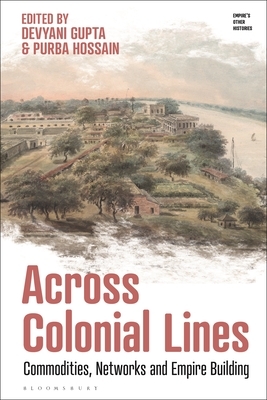Across Colonial Lines: Commodities, Networks and Empire Building by Devyani Gupta

1
From commodity trade to 'virtual' empire: Venice in the twelfth to fifteenth centuries
Andrew Blackler
Traditionally, the fifteenth century has been taken as the beginning of the
colonial era, yet it can also be viewed as the culmination of a 300-year period of
development that provided the essential tools for Portuguese expansion along
the coast of Africa, and the discovery and exploitation of the new world. Some
developments were technological – innovations in ship design, cartography and
navigation – but others related to nascent processes of colonial organization and
administration to exploit the opportunities for commodity trade and cabotage
within the Mediterranean basin that emerged among the competing littoral city
states of Italy – Amalfi, Pisa, Genoa and Venice.
This trade, and the way in which it defined the structure and practical (as
opposed to territorial) extent of the Venetian Republic’s maritime empire, the
Stato da Mar, is the focus of this chapter.
It draws on the author’s research into
the history, topography and commodity exports of the Greek island of Euboea,
known as Negroponte in the late medieval period, which grew under Venetian
suzerainty into the leading city of the Aegean in the late fifteenth century and,
following its capture by the Ottomans in 1470, their capital of central Greece.
Few local records survive of this period, but the extensive archives of the various
political organs of the Venetian state provide a rich resource for understanding
the empire’s evolution and organization.
After a short summary of the historical background, I examine the trading
flows of commodities within the Eastern Mediterranean, eschewing a focus
on one (such as silk or spice), while demonstrating the complexities of their
interdependence and then analyse the structures installed by the Venetians to
exploit the profits from this trade. These can be understood within the framework
of Foucault’s ‘governmentality’, which addresses what he calls ‘government
rationality’ – the techniques and practices for governing populations of
subjects. Study of the ‘technologies of risk’ followed, later expanded by
colleagues to research into the welfare estate. By extension, this enables us to
distinguish between what Foucault terms the modern ‘governmental’ state and
the sovereign state, which he sees it as superseding.
Foucault addresses this
theme, commencing with the political treatises published from the sixteenth
century – something generally followed by later writers. This chapter suggests,
however, that discussions on modern government, commodity trade and
empires need to encompass the much earlier practical developments in the
political and economic institutions of the Italian merchant ‘communes’ – city
states from which emerged many of the accounting, limited liability, banking
and insurance concepts, which form the pillars of the modern free-market
economy.
It is further argued that the extent of the Venetian Empire cannot be explained
simply by existing definitions of empire based on two-dimensional models.
Since its wealth was essentially generated from commerce, its breadth needs
to be understood by focusing not on physical boundaries (both land and sea)
but on commercial transactions and relationships – by inference, the citizens of
the empire.
Across Colonial Lines: Commodities, Networks and Empire Building by Devyani Gupta




